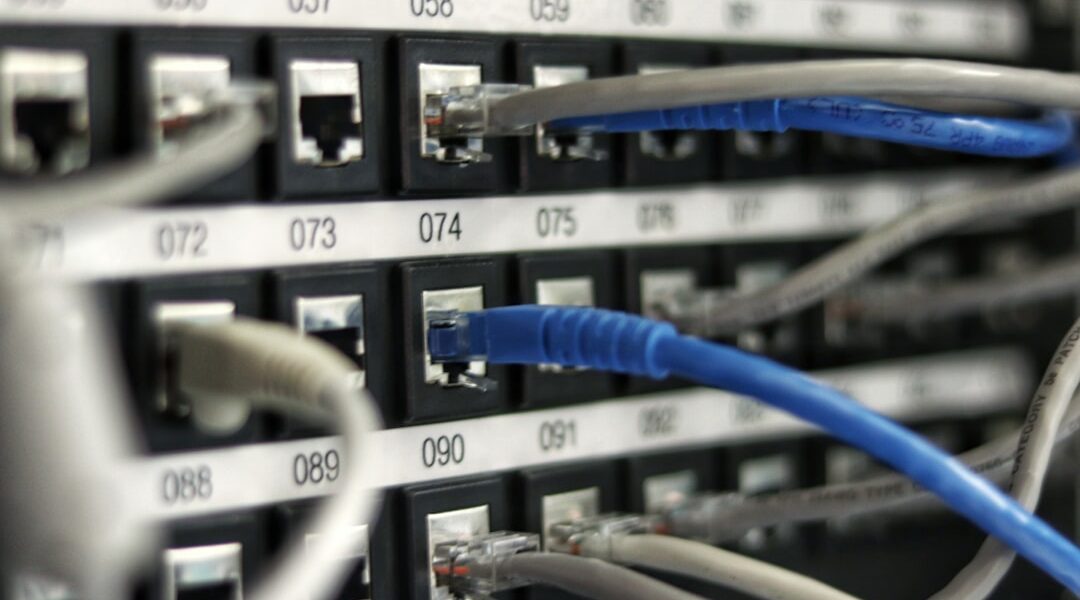Edge computing represents a paradigm shift in the way data is processed, stored, and analyzed. Unlike traditional cloud computing, which relies on centralized data centers, edge computing brings computation and data storage closer to the location where it is needed. This proximity to the data source significantly reduces latency, enhances speed, and improves the overall efficiency of applications.
As the Internet of Things (IoT) continues to proliferate, the demand for real-time data processing has surged, making edge computing an essential component of modern digital infrastructure. The concept of edge computing is not entirely new; however, its relevance has grown exponentially with advancements in technology and the increasing volume of data generated by connected devices. By distributing computing resources across various edge nodes—such as local servers, gateways, and even devices themselves—organizations can achieve faster response times and more reliable performance.
This shift is particularly crucial for applications that require immediate data processing, such as autonomous vehicles, smart cities, and industrial automation systems. As businesses seek to leverage these technologies, understanding the implications of edge computing on application performance becomes paramount.
Understanding App Performance
Application performance is a multifaceted concept that encompasses various metrics and factors influencing how well an application operates. Key performance indicators (KPIs) such as response time, throughput, and resource utilization are critical in assessing an application’s efficiency and user experience. Response time refers to the duration it takes for an application to respond to a user’s request, while throughput measures the number of transactions or processes completed in a given timeframe.
High performance in these areas is essential for user satisfaction and retention. Moreover, application performance is not solely about speed; it also involves reliability and scalability. An application must be able to handle varying loads without degradation in performance.
For instance, during peak usage times, an application should maintain its responsiveness and not crash or slow down significantly. Additionally, the architecture of the application plays a crucial role in its performance. Applications designed with microservices can often scale more efficiently than monolithic applications, allowing for better resource allocation and management.
The Role of Edge Computing in App Performance

Edge computing plays a transformative role in enhancing application performance by addressing some of the inherent limitations of traditional cloud computing. By processing data closer to the source, edge computing minimizes latency, which is particularly beneficial for applications that require real-time data analysis. For example, in a smart manufacturing environment, sensors on machinery can send data to edge devices for immediate processing, allowing for quick decision-making that can prevent equipment failures or optimize production processes.
Furthermore, edge computing alleviates bandwidth constraints that often plague cloud-based systems. By filtering and processing data at the edge, only relevant information is sent to centralized cloud servers. This not only reduces the amount of data transmitted over networks but also decreases the load on cloud resources.
Consequently, applications can operate more efficiently, as they are not bogged down by unnecessary data transfers. This architecture is especially advantageous for applications in remote locations where connectivity may be limited or unreliable.
Benefits of Edge Computing on App Performance
| Metrics | Benefits |
|---|---|
| Latency | Reduced latency for faster app performance |
| Bandwidth | Optimized bandwidth usage for improved app responsiveness |
| Data Privacy | Enhanced data privacy and security for app users |
| Reliability | Increased reliability with local processing and storage |
The benefits of edge computing on application performance are manifold. One of the most significant advantages is the reduction in latency. By processing data locally rather than relying on distant cloud servers, applications can achieve near-instantaneous response times.
This is crucial for applications such as augmented reality (AR) and virtual reality (VR), where delays can severely impact user experience and immersion. Another benefit is improved reliability and availability. Edge computing can enhance fault tolerance by distributing workloads across multiple edge nodes.
If one node fails or experiences issues, others can take over seamlessly, ensuring that applications remain operational. This redundancy is vital for mission-critical applications in sectors like healthcare and finance, where downtime can have severe consequences. Additionally, edge computing can lead to cost savings in terms of bandwidth usage and cloud storage expenses.
By processing data at the edge and only sending essential information to the cloud, organizations can significantly reduce their data transfer costs. This efficiency allows businesses to allocate resources more effectively and invest in other areas of their operations.
Challenges of Implementing Edge Computing for App Performance
Despite its numerous advantages, implementing edge computing for enhanced application performance comes with its own set of challenges. One significant hurdle is the complexity of managing a distributed architecture. Unlike traditional centralized systems, edge computing requires organizations to oversee multiple nodes spread across various locations.
This complexity can lead to difficulties in monitoring performance, ensuring security, and maintaining consistency across different environments. Security is another critical concern when deploying edge computing solutions. With data being processed at multiple locations, there are increased risks associated with data breaches and unauthorized access.
Organizations must implement robust security measures to protect sensitive information at the edge while ensuring compliance with regulations such as GDPR or HIPAThis often necessitates additional investments in security infrastructure and expertise. Moreover, integrating edge computing with existing IT systems can pose compatibility issues. Organizations may need to update or replace legacy systems to fully leverage the benefits of edge computing.
This transition can be resource-intensive and may require significant changes to workflows and processes.
Case Studies: Successful Implementation of Edge Computing for App Performance

Several organizations have successfully implemented edge computing solutions to enhance their application performance, showcasing its potential across various industries. One notable example is a leading automotive manufacturer that integrated edge computing into its production line. By deploying edge devices equipped with machine learning algorithms on the factory floor, the company was able to analyze sensor data from machinery in real-time.
This allowed for predictive maintenance, reducing downtime by 30% and significantly improving overall operational efficiency. Another compelling case study involves a global retail chain that utilized edge computing to enhance its customer experience. By implementing edge servers in stores, the retailer was able to process customer transactions locally while also analyzing shopping patterns in real-time.
This enabled personalized marketing strategies and inventory management based on immediate customer behavior, resulting in a 20% increase in sales during peak shopping seasons. In the healthcare sector, a hospital network adopted edge computing to improve patient monitoring systems. By using edge devices connected to medical equipment, healthcare providers could monitor patient vitals in real-time without relying on centralized cloud systems.
This not only improved response times during emergencies but also enhanced patient outcomes by enabling timely interventions based on immediate data analysis.
Future Trends in Edge Computing and Its Impact on App Performance
As technology continues to evolve, several trends are emerging that will shape the future of edge computing and its impact on application performance. One significant trend is the increasing integration of artificial intelligence (AI) at the edge. By embedding AI capabilities into edge devices, organizations can enable more sophisticated data processing and decision-making without relying on cloud resources.
This will further enhance real-time analytics capabilities and allow for more autonomous operations across various sectors. Another trend is the growing adoption of 5G technology, which will significantly bolster edge computing capabilities. The high-speed connectivity offered by 5G networks will facilitate faster data transfer between devices and edge nodes, reducing latency even further.
This will be particularly beneficial for applications requiring high bandwidth and low latency, such as remote surgery or autonomous vehicle navigation. Additionally, as more organizations embrace hybrid cloud environments that combine both edge and cloud resources, we can expect greater flexibility in application deployment strategies. This hybrid approach will allow businesses to optimize their operations by leveraging the strengths of both architectures—using edge computing for real-time processing while utilizing cloud resources for long-term storage and complex analytics.
The Potential of Edge Computing in Enhancing App Performance
The potential of edge computing in enhancing application performance is vast and continues to grow as technology advances. By bringing computation closer to the data source, organizations can achieve lower latency, improved reliability, and cost savings while enhancing user experiences across various applications. Despite challenges related to complexity and security, successful implementations across industries demonstrate that the benefits far outweigh the drawbacks.
As we look toward the future, trends such as AI integration at the edge and the rollout of 5G networks will further amplify these advantages, paving the way for innovative applications that were previously unimaginable. The ongoing evolution of edge computing will undoubtedly play a pivotal role in shaping how applications perform in an increasingly connected world, making it an essential consideration for businesses aiming to stay competitive in their respective markets.
FAQs
What is edge computing?
Edge computing is a distributed computing paradigm that brings computation and data storage closer to the location where it is needed, improving response times and saving bandwidth.
How will edge computing affect app performance?
Edge computing will improve app performance by reducing latency and improving response times, as data processing and storage will be closer to the end user.
What are the benefits of edge computing for app performance?
The benefits of edge computing for app performance include faster response times, improved reliability, reduced latency, and the ability to handle large amounts of data more efficiently.
Will edge computing impact the way apps are developed and deployed?
Yes, edge computing will impact the way apps are developed and deployed, as developers will need to consider the location of data processing and storage in order to optimize app performance.
What are some potential challenges of implementing edge computing for app performance?
Some potential challenges of implementing edge computing for app performance include managing distributed infrastructure, ensuring data security and privacy, and dealing with the complexity of edge networks.



